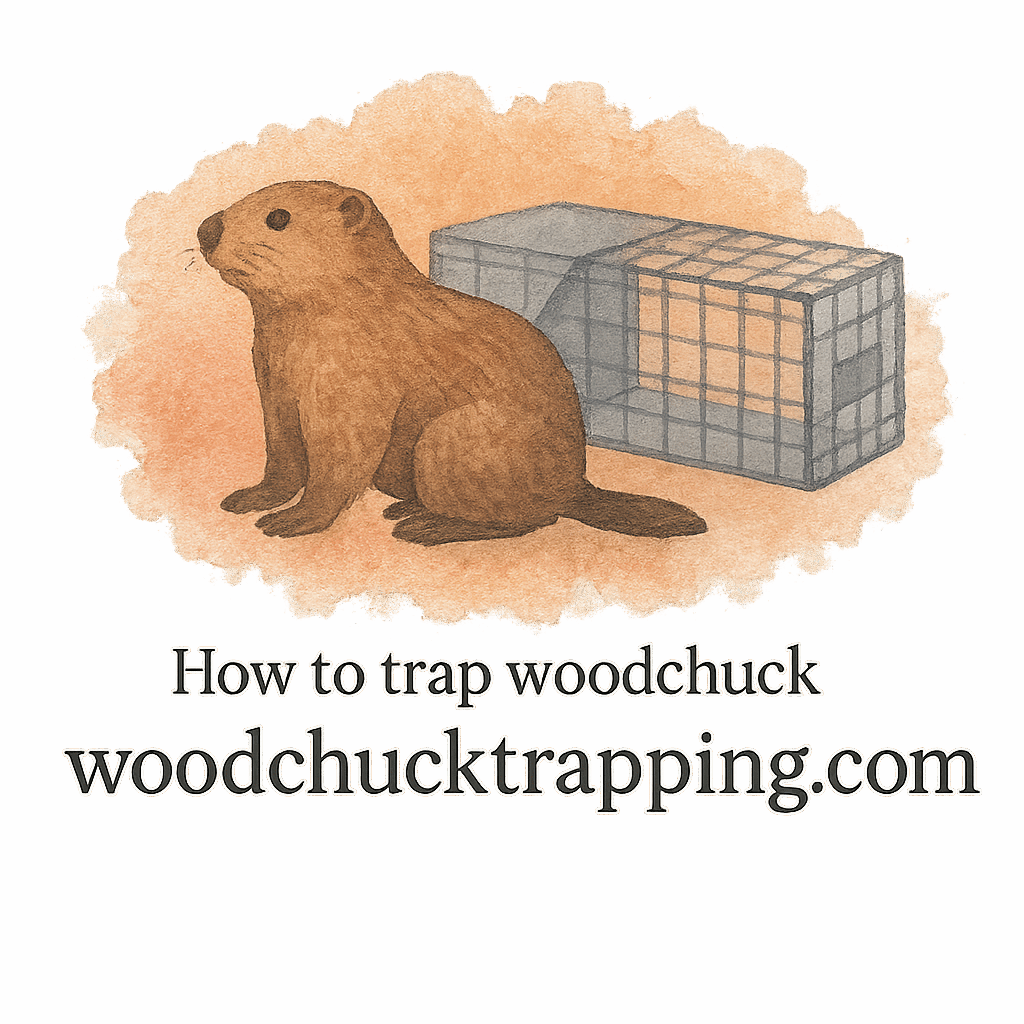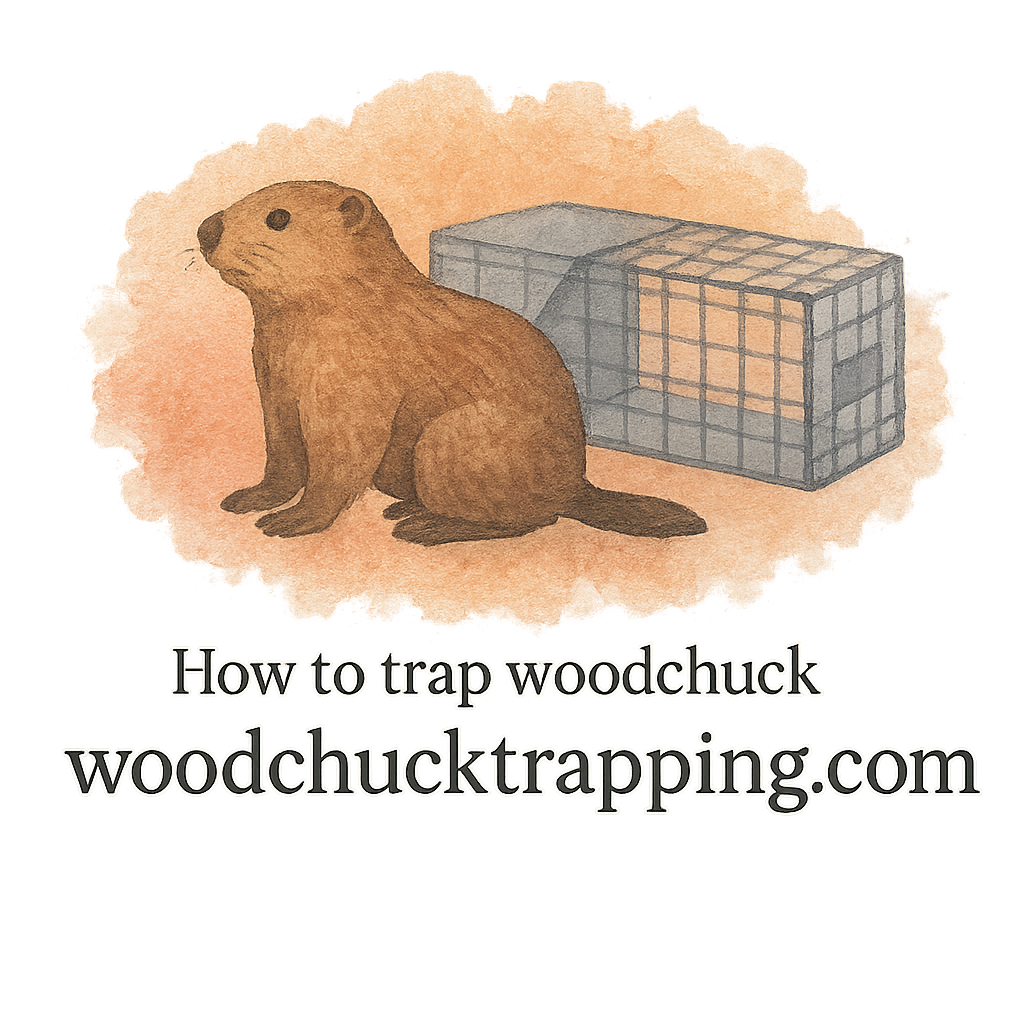Introduction: Why Humane Woodchuck Trapping Matters
When you discover burrows in your yard or see plants mysteriously disappearing from your garden, chances are you’ve got a woodchuck problem. These critters may look harmless, but their digging can cause serious structural damage and wreak havoc on small yards. Instead of turning to harmful methods, many homeowners are learning the value of humane woodchuck trapping techniques. Not only do these methods protect your property, but they also prioritize the welfare of the animal.
Understanding Woodchucks and Their Behavior
Woodchucks, also called groundhogs, are burrowing animals that can create tunnels stretching over 30 feet long. To deal with them effectively, it’s important to understand their behavior.
Common Signs of a Woodchuck Infestation
Before setting traps, look for telltale signs of infestation: fresh dirt mounds near burrows, chewed garden plants, and weakened fences.
How Woodchuck Burrows Affect Your Yard
Their burrows may look like small holes, but underground they can collapse lawns, weaken foundations, and even damage decks or sheds.
What Are Humane Woodchuck Trapping Techniques?
Humane techniques focus on capturing woodchucks safely, without causing them injury or stress. Unlike harmful poisons or lethal traps, these approaches prioritize animal welfare.
Key Tools and Equipment for Humane Trapping
Having the right equipment is the backbone of humane trapping.
Compact Traps for Minimal Space
For homeowners with small yards, compact traps make humane trapping possible, even in limited areas.
Gloves and Safety Gear
Always wear gloves and protective clothing. This prevents scent transfer and reduces direct contact when handling a trapped animal.
Baiting and Luring in a Humane Way
Proper baiting and luring is essential. Instead of harsh attractants, using fresh vegetables or safe lures provides an effective, kind approach.
Benefit 1: Humane Trapping Protects the Animal
Preventing Harm During Capture
Humane trapping techniques use cage-style traps designed to avoid injury. This makes them a more ethical choice compared to harsh alternatives.
Safe Handling of a Trapped Animal
With proper trapping essentials, including trap gear, homeowners can ensure safe relocation.
Benefit 2: Reduces Yard Damage Without Harsh Measures
Preventing Further Burrowing
Once removed, woodchucks can no longer create destructive burrows that destabilize lawns and foundations.
Preserving Gardens and Small Yards
Humane trapping also safeguards delicate plants, especially for those managing a small yard where damage is more noticeable.
Benefit 3: Improves Safety for Homeowners and Pets
Reducing Direct Encounters
Woodchucks are not typically aggressive, but when cornered, they may bite or scratch. Humane trapping reduces close interactions.
Lower Risk of Disease Transmission
By practicing safe handling, homeowners minimize exposure to parasites or diseases that woodchucks can carry.

Benefit 4: Eco-Friendly and Sustainable Approach
Avoiding Harmful Chemicals or Poisons
Instead of toxic methods, humane traps maintain a healthy environment and avoid harming other wildlife.
Supporting Local Ecosystems
Relocating woodchucks rather than exterminating them allows ecosystems to stay balanced, preventing unintended consequences.
Benefit 5: Compliance with Local Laws and Safety Standards
Understanding Trapping Regulations
Many states have strict laws and safety requirements for trapping. Using humane methods ensures compliance.
Practicing Humane Release Techniques
Safe relocation follows ethical standards, ensuring the woodchuck can thrive in a suitable environment.
Benefit 6: Long-Term Prevention of Future Infestations
Using Trap Scent and Lures Effectively
Strategic use of trap scent and scent bait prevents repeat infestations.
Combining Trapping with Yard Damage Prevention
Pairing humane traps with prevention methods ensures long-term success.
Expert Tips for Successful Humane Trapping
Choosing the Right Trap Gear
Reading equipment reviews helps homeowners pick traps suited for their property size.
Techniques for Attracting Woodchucks Safely
Humane techniques rely on fresh produce, scent control, and patience.
Common Mistakes to Avoid in Woodchuck Trapping
Overusing Scent Bait
Too much scent bait can overwhelm the woodchuck and make traps less effective.
Ignoring Signs of Burrows
Overlooking fresh burrows often leads to misplaced traps and wasted time.
Conclusion: The Humane Way Forward
Humane woodchuck trapping is more than just an effective solution—it’s a responsible one. By choosing ethical trapping techniques, homeowners can protect their property, follow the law, and preserve wildlife. Whether you’re dealing with a woodchuck infestation in a small yard or just want peace of mind, humane methods are the way forward.
FAQs
What is the most humane way to trap a woodchuck?
Using cage-style traps with proper trap gear ensures the woodchuck is captured safely without injury.
Do humane traps actually work for woodchucks?
Yes! With the right how-to trap guide and fresh bait, humane traps are very effective.
Can humane trapping prevent yard damage long-term?
When paired with yard damage prevention techniques, humane trapping offers long-term results.
What bait works best for humane trapping?
Fresh vegetables combined with mild lures or scent bait are most effective.
Are humane woodchuck traps safe for pets?
Yes, if set up properly. Always check safety guidelines before placement.
Do I need special gloves when handling a trapped animal?
Absolutely. Gloves protect you from bites, scratches, and scent transfer.
How can I stop woodchucks from coming back after trapping?
Use prevention strategies like fencing, filling burrows, and applying trap scent deterrents.


